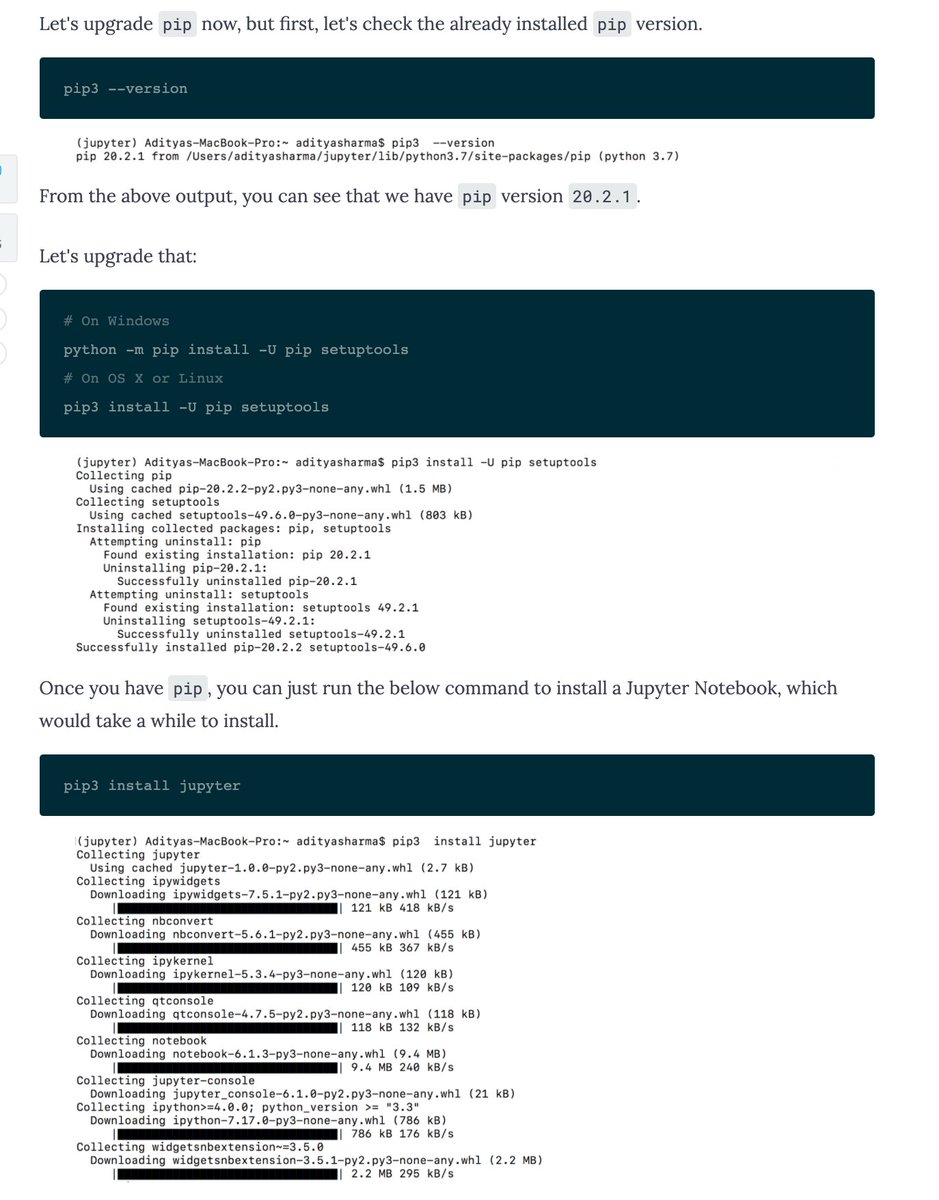
- #PIP INSTALL JUPYTER NOTEBOOK PIP3 HOW TO#
- #PIP INSTALL JUPYTER NOTEBOOK PIP3 INSTALL#
- #PIP INSTALL JUPYTER NOTEBOOK PIP3 UPDATE#
- #PIP INSTALL JUPYTER NOTEBOOK PIP3 PASSWORD#
- #PIP INSTALL JUPYTER NOTEBOOK PIP3 SERIES#
It provides an OS independent system, so you can use it for any of the operating systems like Windows, Linux (Ubuntu), MacOS, etc… Pip is the default package management system or tool for installing/uninstalling and managing different packages in Python. Installing Jupyter Python Notebook For Python 2 and 3
#PIP INSTALL JUPYTER NOTEBOOK PIP3 INSTALL#
Jupyter is a very productive tool that we can easily install on any computer thanks to PIP.
#PIP INSTALL JUPYTER NOTEBOOK PIP3 PASSWORD#
1.- Access to JupyterĪfter entering the password you have defined, you can start working. Now run it and from a web browser, you will be able to log in. Wrote hashed password to /home/angelo/.jupyter/jupyter_notebook_config.json Then, generate a password that will help us to secure the Jupyter instance. nano /home/angelo/.jupyter/jupyter_notebook_config.pyįind the c.NotebookApp.allow_remote_access line and set it to True. If you will be using Jupyter on your computer locally, skip this step. Then, modify it so that you can access it from any host or network. Writing default config to: /home/angelo/.jupyter/jupyter_notebook_config.py Once you have done this, generate a default configuration file by running: jupyter notebook -generate-config Press the CTRL + C keys to finish running Jupyter. On the output screen, you will have the information that you can access from the browser but we can configure Jupyter to make it more secure and personal. No web browser found: could not locate runnable browser. Use Control-C to stop this server and shut down all kernels (twice to skip confirmation). Serving notebooks from local directory: /home/angelo/notebook Writing notebook server cookie secret to /home/angelo/.local/share/jupyter/runtime/notebook_cookie_secret Now yes, with the help of PIP install Jupyter pip install jupyterĪfter that, run Jupyter with the following command jupyter notebook Seeder FromAppData(download=False, pip=bundle, setuptools=bundle, wheel=bundle, via=copy, app_data_dir=/home/angelo/.local/share/virtualenv)Īdded seed packages: pip=21.1.2, setuptools=57.0.0, wheel=0.36.2Īctivators BashActivator,CShellActivator,FishActivator,PowerShellActivator,PythonActivator,XonshActivatorĪnd then, activate the environment source jupyter/bin/activate virtualenv jupyterĬreated virtual environment CPython3.8.5.final.0-64 in 963msĬreator CPython3Posix(dest=/home/angelo/notebook/jupyter, clear=False, no_vcs_ignore=False, global=False) Now create a new python environment, called jupyter. I will call it notebook but you can choose any name. Install Jupyter Notebook on Ubuntu 20.04įirst, create a folder where the installation will be installed. Now we have the requirements to proceed to install Jupyter. Now, using PIP install the virtualenv package with which we can create virtualized environments. Pip 21.1.2 from /usr/local/lib/python3.8/dist-packages/pip (python 3.8) sudo -H pip3 install -upgrade pipĬheck the new version of PIP with the command: pip -version
#PIP INSTALL JUPYTER NOTEBOOK PIP3 UPDATE#
To do this, run the following command sudo apt install python3-pip python3-devīefore using PIP it is advisable to update it so that you do not face package problems. Next, it is necessary to install Python and some of its libraries along with PIP. Install Jupyter Notebook on Ubuntu 20.04īefore starting, in a terminal environment, make sure Ubuntu is fully updated.

#PIP INSTALL JUPYTER NOTEBOOK PIP3 SERIES#
The installation is quite simple although it requires a series of steps.

Documents created in Jupyter can be exported, among other formats, to HTML, PDF, Markdown, or Python and can also be shared with other users by e-mail, using Dropbox or GitHub, or via the integrated Jupyter Notebook viewer. The prerequisite is to install and run the Jupyter Notebook server on the system. The program is run from the client web application that works in any standard browser. Uses include: data cleaning and transformation, numerical simulation, statistical modeling, data visualization, machine learning, and much more. The Jupyter Notebook is an open-source web application that allows you to create and share documents that contain live code, equations, visualizations, and narrative text.
#PIP INSTALL JUPYTER NOTEBOOK PIP3 HOW TO#
So in this post, you will learn how to install it.Īccording to the official site of the Jupyter project:


Having a tool like Jupyter Notebook can be something very useful that we should take into account.


 0 kommentar(er)
0 kommentar(er)
